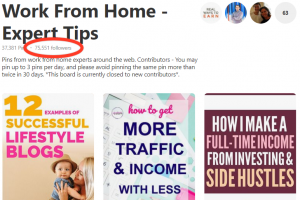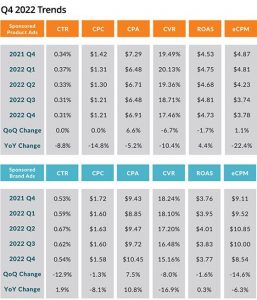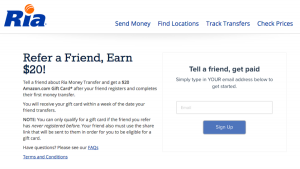— December 27, 2018
It seems irrelevant – particularly in the context of your written content – but your blog’s design might be losing you customers. Think about if you landed on a new company’s blog and, even though it updates regularly, it looks like it was designed in 2009. How would you, as a potential customer, feel about that company? Would you read their text? Even if you did, wouldn’t it erode some of your faith in that firm?
In 2018, well-designed websites are a dime a dozen. You may lack a dedicated web designer but customers won’t accept that as an explanation for why your blog looks like an old BlogSpot post. You could post the best written content on the web, but if nobody reads it, you may as well have stayed silent.
So today, we’re going to wrap up our series on authoritative content writing with a brief overview of blog design best practices.
Step One: Choosing a Platform
There are a wide variety of options available to the enterprising business blogger. So many, in fact, that it’s hard to make heads or tails of them. The platform you choose impacts your design flexibility, functionality, and the overall layout of your blog. Let’s take a look at some of the most popular choices:
1. WordPress
There are two different WordPress platforms – the free, if less appealing, WordPress.com and the pricier, but much more developed, WordPress.org. Most bloggers run some form of WordPress, and the platform hosts quite a few features such as Google Analytics and custom themes.
2. Blogger
Blogger is Google’s answer to WordPress and other blogging platforms. Obviously, as a Google platform, it is well-optimized for web support. While many business bloggers use this platform, it’s worth noting that the limited features and design choices make this a surprisingly difficult platform to use for a professional setting.
3. SquareSpace
SquareSpace is an up and coming platform that takes you through the process of developing your own website and blog. It offers a wide variety of design features and is incredibly user-friendly. At the same time, however, it’s a premium web hosting platform and can set you back a bit on a monthly basis. That said, if you’re willing to spend some money, it can be a great platform for your blog.
Step Two: Aesthetics
Setting up your blog requires some graphic design inspiration. You need to consider the layout, color scheme, text and size for every element on your page. Unless you run a graphic design business, however, this might not come naturally. Thankfully there are plenty of tips available for new business bloggers to plan their design in advance.
Remember the advice we’ve discussed before – your tone and brand identity ought to be the guiding lights for your blog setup. Color scheme and typeface are essential elements that impact your blog’s overall tone. Color theory plays a major role in this process, and it’s worth noting which colors work with which. Blue and orange, for example, are a classic case of complementary colors – that is to say, they are opposite each other on the color wheel. Customers may associate colors with feelings, or at the very least, brands. Thus it’s important to create a consistent, reliable, and pleasant color scheme for your visitors.
Experts advise that you minimize your selection of colors and typefaces to two to three choices total. Any more than this and you may as well paint your website like a rainbow. Inconsistent color choice impacts readability and decreases your authority. The last thing you want is for a potential customer to think your blog looks like a child’s art project!
Subtlety is the name of the game in the graphic design world today. Even if your brand is casual and laid-back, you still want to exude an aura of professionalism. Not to mention that picking bright, neon colors makes it much harder to read your website in the first place. Neon yellows, bright reds, and other gaudy colors are best left out of your design in favor of grays, blacks, and subtle pastels.
On a related note, don’t be afraid of whitespace. Cramming too much into your blog can easily overwhelm a customer – and you can’t expect anyone to read a novel on their monitor at work!
Step Three: Content!
Your content and its layout are a major factor in your blog design. Most blog readers don’t read every single word you write – they skim. That’s why you should focus on writing the best magnetic headlines possible to draw in wandering eyes. A powerful headline implies powerful content, and can drag reluctant readers into your posts.
Content placement is also important for planning your writing. You should be sure to front-load your important informational all times. Within content writing, this is the so-called “inverted pyramid” model. You want your most important information in a dense section toward the top of your post, with supplementary material following. If a busy reader is going to see anything, it’s best they see the most important material before clicking away.
As a corollary, consider placing as much content as possible “above the fold” in a web page. Since most readers won’t scroll down far – if at all – it’s important they see most of what you have on one screen. Consider, also, different screen resolutions and sizes – visit your own blog from different devices and determine how it looks in each situation – that’s how your customers will view your blog. Does it work? If not, you’re going to want to address that concern.
Step Four: Accessibility
Mobile compatibility is key these days, as more and more people visit websites on their phones. It’s possible to leave your website unchanged for mobile, but go ahead and visit it on your phone and see how well that works. If it does, you have the choice of skipping a dedicated mobile port, but keep in mind it’s still less-than-optimal for mobile users. At the same time, though, you won’t need to replace your mobile site every few months.
The goal with accessibility is to maximize your readers, and so it’s important to consider different devices – particularly tablets and phones. Choosing the right layout for a mobile page improves your users’ navigation and lets a larger audience access your material.
Digital & Social Articles on Business 2 Community
(55)




